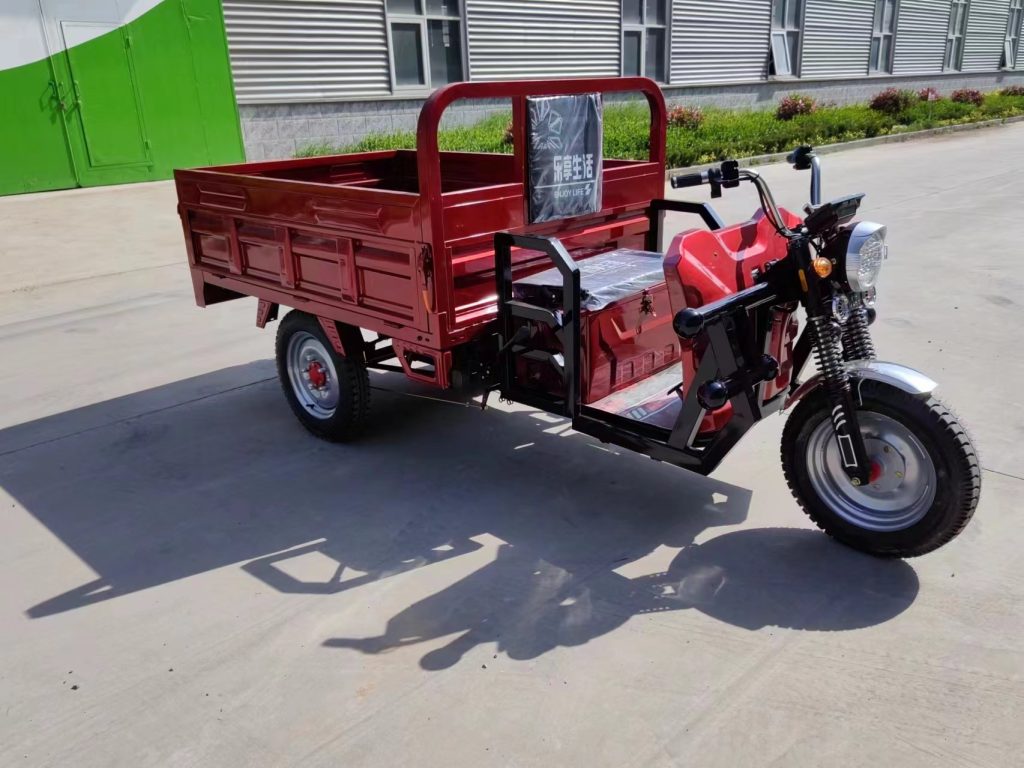Motorized tricycle is the most convenient and eco-friendly transportation in the world. Motorized tricycles are used in all uses, given their efficiency, cost-effectiveness, and versatility, ranging from intra-city to logistics.
Entrepreneurs or any other individuals who need reliable motorized tricycles should deal with a specialized motorized tricycle factory and study the motorized tricycle factory process so that they may make a proper buying decision.
This is a general article that covers all forms of motorized tricycles, the key things to consider when selecting a manufacturer, how manufacturing takes place within a factory, trends within the industry and what is coming on the horizon, repair and maintenance, and cost concerns.
What Is a Motorized Tricycle?
A motor tricycle is powered by an electric motor or an internal combustion engine (LPG, diesel, or gasoline). Tricycles are more stable, carry-efficient, and easier to handle than motorcycles, and therefore ideal for:
1. Passenger Transport
- Auto-rickshaws (Tuk-tuks): Widespread application in Asia, South America, and Africa for intra-city transportation.
- Mobility-impaired & Elderly Mobility: Motor tricycles are a convenient mode of mobility for mobility-impaired persons.
2. Cargo & Logistics
- Delivery Tricycles: Employed by logistics companies and shopping malls for last-mile delivery.
- Agricultural & Industrial Use: The bigger ones transport commodities from rural to urban.
3. Personal & Recreational Use
- Leisure Riding: Tourists ride on specially built tricycles on tour.
- Food Vending: Employed by street vendors to be utilized as food carts or ice cream trikes.
Because the motorized tricycle is multi-purpose, it must be chosen for performance and endurance when used in the long term.
How to Choose the Right Motorized Tricycle Factory
Not all factories make tricycles of equal quality. Here’s how to select a motorized tricycle factory:
1. Industry Reputation & Experience
- Choose manufacturers with 5+ years’ experience in making motorized tricycles.
- Review customer testimonials, industry accolades, and certifications (ISO, CE, DOT compliance).
2. Production Capacity & Customization
- Can they accommodate bulk orders?
- Do they support special features, like longer cargo beds or specialty seats?
3. Motor & Battery Choices
- Electric Tricycles: Lead-acid or lithium-ion batteries—which has the longer range?
- Gas-Powered Models: Engine durability and fuel economy are key considerations.
4. Safety & Compliance
- Is the company to international safety standards (e.g., US DOT, EU, or Asian)?
- Are stability systems, lights, and brakes extensively tested?
5. After-Sales Assistance
- Warranty duration (at least 1-2 years on main components).
- Spare parts and maintenance availability.
Good motorized tricycle companies will provide transparent prices, product test reports, and readily available customer support.
Inside a Motorized Tricycle Manufacturing Factory
Interested in knowing how a motorized tricycle is manufactured? Here is the step-by-step, detailed process in a motorized tricycle factory:
1. Research & Design (R&D)
- Powertrain, suspension, and frame designers utilize CAD.
- Load-carrying simulation and wind tunnel tests are applied to prototypes.
2. Material Selection
- Protors (and body parts): High-tensile steel or light-weight aluminum for durability.
- Body Panels: Fiberglass or reinforced plastic for weatherproofing.
- Electric batteries: Lithium-ion for long-life batteries.
3. Assembly Line Process
- Frame Fabrication: Robot cutting and laser welding for precise fabrication.
- Powertrain Installation: Motor/engine, transmission, and drivetrain installation.
- Electrical Systems: Dashboard control bracket mounting, lights, and wiring harness.
- Body Assembly: Fender mounting, storage compartment, and seat.
4. Quality Control & Testing
- Road Testing: 50-100 km test drive for all tricycles.
- Brake & Safety Checks: Suspension, ABS, and emergency braking test.
- Water & Dust Proofing: Proper sealing of electronics.
5. Packaging & Shipping
- Tricycles are sent out unassembled (in the event of export) or assembled.
- Precautionary rust-proofing applied during shipping does not preclude rusting.
An efficient and mechanized motor tricycle factory guarantees effectiveness, standardization, and quality production.
New Motorized Tricycle Technology Trends
New Motorized Tricycle Technology Trends
The globe is changing at a fast pace. Listed below are the most notable trends revolutionizing motorized tricycles:
1. Electric & Hybrid Tricycles
- 150-200 km per charge with Lithium-ion batteries.
- Regenerative braking for enhanced efficiency.
2. Smart Connectivity
- GPS tracking for fleet management.
- Battery monitoring with mobile app connectivity.
3. Lightweight & Aerodynamic Designs
- Carbon fiber components for lightweight.
- Improved aerodynamics for better speed and range.
4. Autonomous & AI-Assisted Features
- Self-parking and collision avoidance are present in some of these vehicles.
- Companies that are investing in these features are market leaders.
Maintenance Tips for Motorized Tricycles
To maximize the use of your motorized tricycle:
For Electric Models:
- Charge batteries when they drop to 20%.
- Store them in a cool, dry place to prevent battery deterioration.
For Gas-Powered Models:
- Change engine oil every 3,000 km.
- Clean air filters monthly.
Maintenance Routine:
- Check tire pressure weekly.
- Lubricate bearings and chains from time to time.
- A well-serviced tricycle will last 5-8 years or more.
Conclusion
For commercial use or individual use, a motorized tricycle offers:
- Affordability – Cheaper to buy than cars or trucks.
- Eco-Friendliness – Electric models have zero emissions.
- Versatility – Utilized for passengers, merchandise, or vending.
- Ease of Use – No special permit required to acquire in most provinces.
Having chosen a good quality motorized tricycle manufacturer and knowledge of manufacturing standards, you now possess a high-performance, long-lasting vehicle.

 Instant
Quote
Instant
Quote Email
Us
Email
Us